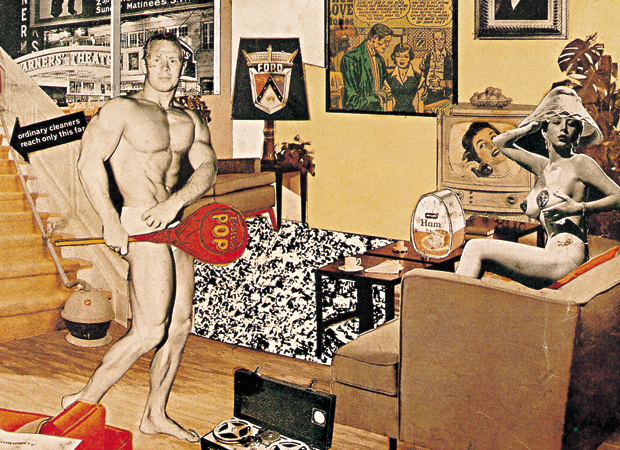Pop art employs aspects of mass culture, such as adverting, comic books and mundane cultural objects
it is similar to DADA
Pop art began in the mid 1950s and reached its peak in the 1960s. It was a revolt against prevailing orthodoxies in art and life and can be seen as one of the first manifestations of postmodernism. Sources pop artists used for their work included Hollywood movies, advertising, packaging, pop music and comic books.By creating paintings or sculptures of mass culture objects and media stars, the Pop art movement aimed to blur the boundaries between "high" art and "low" culture. The concept that there is no hierarchy of culture and that art may borrow from any source has been one of the most influential characteristics of Pop art.
Since the early 1960s, when the American version of Pop Art seemed to extinguish the spiritual and existential ambitions of Abstract Expressionism, an assumption was quickly made that this new art was the triumph of a fully ascendant materialist America
"Pop is everything art hasn't been for the last two decades. It's basically a U-turn back to a representational visual communication, moving at a break-away speed...Pop is a re-enlistment in the world...It is the American Dream, optimistic, generous and naïve.The subject matter became far from traditional "high art" themes of morality, mythology, and classic history; rather, Pop artists celebrated commonplace objects and people of everyday life, in this way seeking to elevate popular culture to the level of fine art. Perhaps owing to the incorporation of commercial images, Pop art has become one of the most recognizable styles of modern art.
The word 'POP' was first coined in 1954, by the British art critic Lawrence Alloway, to describe a new type of art that was inspired by the imagery of popular culture. Alloway, alongside the artists Richard Hamilton and Eduardo Paolozzi, was among the founding members of the Independent Group, a collective of artists, architects, and writers who explored radical approaches to contemporary visual culture during their meetings at ICA in London between 1952 and 1955. They became the forerunners to British Pop art. At their first meeting Paolozzi gave a visual lecture entitled 'Bunk' (short for 'bunkum' meaning nonsense) which took an ironic look at the all-American lifestyle. This was illustrated by a series collages created from American magazines that he received from GI's still resident in Paris in the late 1940s. 'I was a Rich Man's Plaything', one of the 'Bunk' series, was the first visual artwork to include the word 'POP'.
50s' Design
In the 1950s many countries were recovering from WWII. Across Britain, towns and cities were being rebuilt and redeveloped, more women were working in office and industries than ever before, and a sense of post-war optimism was beginning to flourish.
The 1950s were the age of the consumer. The post-war boom brought massive changes in the home; it was out with the old and in with the new. Open-plan living was introduced, and the fitted kitchen with its brand new appliances was the housewife's domain.
http://www.tate.org.uk/learn/online-resources/glossary/p/pop-art
http://www.theartstory.org/movement-pop-art.htm
http://www.ultraswank.net/interior/1950s-vintage-accessories-for-your-home/
http://www.bbc.co.uk/homes/design/period_1950s.shtml

No comments:
Post a Comment